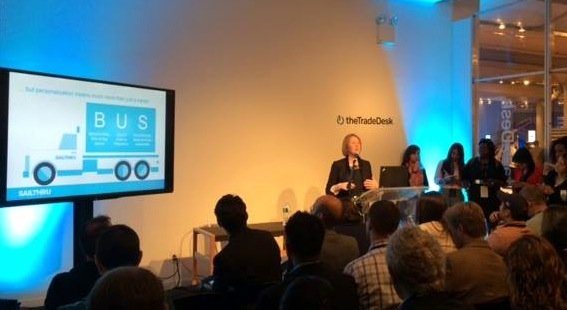Events
3 Questions on the Minds of Marketers ‑ IWNY14 Post‑Presentation Q&A
May 29, 2014

Last week I gave a talk on “Playing the Marketing Long Game” at Internet Week New York 2014, which explained the difference between short-term optimization wins and building sustainable customer lifetime value. I received a number of questions after the event and decided to publicly respond to three key themes that emerged from those conversations.
Before diving into the specifics of the Q&A, though, here’s a snapshot of what we discussed at IWNY:
It’s a known industry fact that it can be up to 5x more cost-effective to retain an existing customer than to acquire a new one, yet only 16% of companies put their primary marketing focus on retention. At Sailthru we work with clients to play the marketing long-game by shifting their focus from open and click rates to the metrics that truly matter – those that prove which tactics and specific efforts are fostering meaningful engagement, conversion and customer lifetime value over the long haul. Isolating out these meaningful behaviors and tracking how the metrics play out over time is ultimately what lets marketing teams deliver true sustainable value.
If you’re interested in finding out more about what we call the “marketing long game,” I’ll be hosting a webinar on Wednesday, June 11th at 4pm, with the presentation given at IWNY for all of those who could not attend!
And now on to the Q&A…
1. Can you further elaborate on the idea of the single customer view (“SCV”)? Does this differ for business of different sizes?
“Single customer view” means getting all of the disparate data points about your end users under one roof; we also call it a 360-degree profile of the user. The proliferation of Big Data has also led to a proliferation of data silos. We have more information about our customer than ever before, but this complicates our ability to get everything in one place. This is the same for businesses of all sizes, but where it differs between enterprise, mid-range and SMB is in the volume of data and where that data is traditionally stored and how it is used.
Marigold Engage by Sailthru, built natively on Mongo to help make this process that much easier but candidly, we are much more focused with how to make that 360-degree profile actionable vs. just data collection/aggregation. It’s great to be able to see customer data in one place, but it’s much more powerful to your bottom line to be able to weave in that information across your different marketing channels.
2. Do these types of engagement metrics extend beyond just transactional/commerce websites? For instance, do they also apply to services business?
While the precise metrics we examine might change (e.g. for subscription businesses we are likely focused on first-time freemium conversion, followed by churns/renewals), the frameworks discussed all apply to all business types. Every business needs to identify the metrics that truly matter (for cultivating long-term retention/value) and optimize toward those. In the subscription example, maybe you test deploying a direct mail piece to new subscribers and note that letter recipients are 5% less likely to churn, for example.
3. How do I get my creative/brand team on board with this type of approach?
It’s mission-critical to get your entire organization thinking in a data-driven way. While this has long been a tension point between “brand” vs. “direct” marketers, UX and design professionals are increasingly motivated by data and a rapid feedback cycle. To help facilitate that feedback cycle while avoiding bias, more and more companies are developing analytics control centers that work cross-functionally across the organization. In the marketing world, this team would work horizontally across all key marketing functions (paid acquisition, design, email marketing, merchandising) to focus on the holistic customer lifecycle and all of the metrics – both real-time and not – and to then help empower those functional departments with additional insights.
For organizations that are still working toward a data-obsessed culture, I recommend isolating out a single area of the business or a single revenue facet (e.g. simply converting first-time buyers versus trying to tackle all of the components of revenue in one fell swoop) and starting there; use that opportunity to build a business case for rapid iterations and measurement, and expand from there. This approach has worked well for several of Sailthru’s smaller clients.
—
Cassie Lancellotti-Young is the VP of Client Optimization & Analytics at Sailthru where she is leading the revolution around 360-degree customer marketing and helping our clients maximize their marketing initiatives.
The State of Brand Loyalty in the U.S. in 2023
Related



